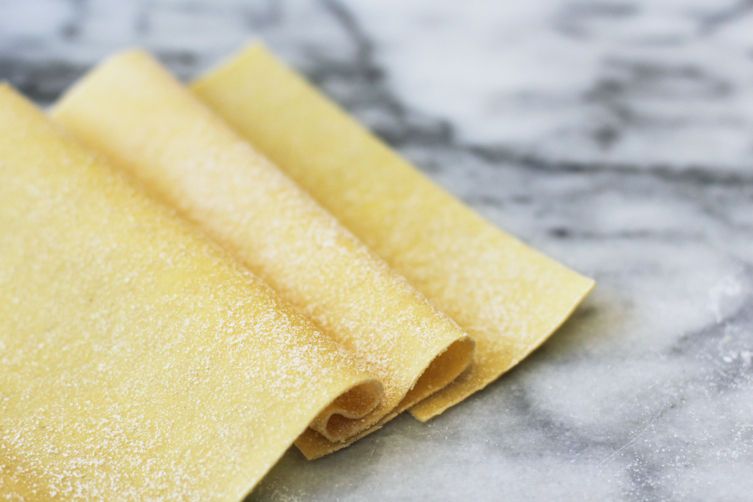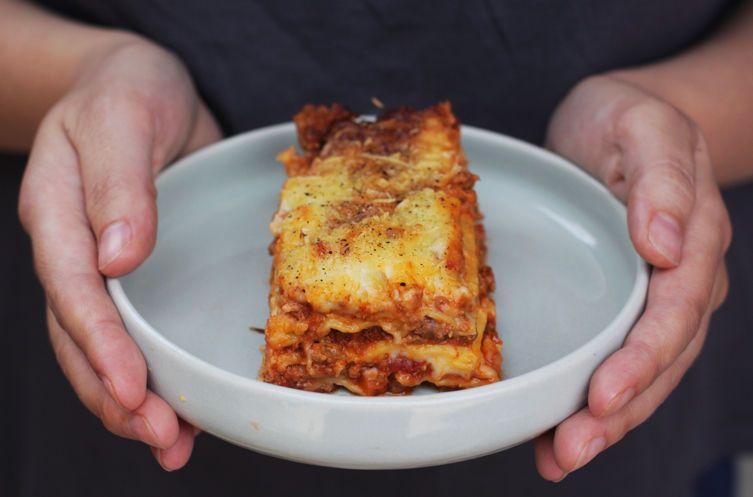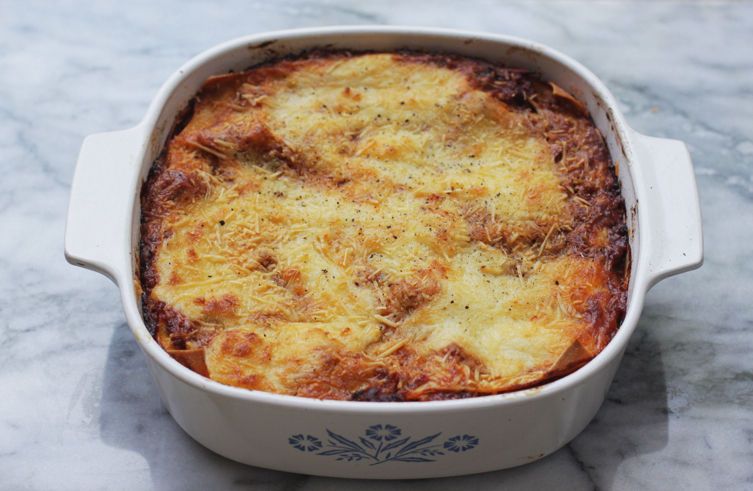Every Tuesday, Italian expat Emiko Davies is taking us on a grand tour of Italy, showing us how to make classic, fiercely regional dishes at home.
Today: A classic dish from Emilia-Romagna that's a classic of the Christmas table.

Lasagne hardly needs an introduction. Famous the world over, it is a favorite of many a household outside of its original home in Emilia-Romagna, where it has been made for centuries.
The classic Emilian lasagne is probably the most emblematic of all lasagne recipes and involves the staples of the region's cuisine: fresh egg pasta (plain or green pasta made with spinach, known as lasagne verdi), full-flavored beef and pork ragu, bechamel sauce, and the region's favorite cheese, Parmesan.
Slowly, and particularly after the Second World War, it became more common to see lasagne in regions all over the Italian peninsula, where regional touches were added.
In the south, mozzarella or provola might replace or be added to the Parmesan. In Sicily and Naples, you'll find fresh ricotta substitutes the bechamel and the ragu might be plumped up with the addition of hard boiled eggs, meatballs, sausage, fried vegetables, or salumi. In Liguria, the home of pesto, a vegetarian version has pesto replacing the ragu and sliced, boiled potatoes substituting the bechamel.

Le Marche and Umbria call their unique variation of lasagne vincisgrassi. Their hearty ragu of beef and pork usually includes an array of offal (chicken gibblets, crests or calf brains, for example) or even local truffles and the handmade pasta dough is often spiked with marsala.
Lasagne is also known in some households as pasticcio, a charming name which also means “mess”. Whatever it's called and however it's made, lasagne is a dish made to satisfy and comfort, a favorite for family gatherings and social occasions like Christmas.
In Emilia-Romagna, the classic lasagne involves preparing a loose bechamel sauce and a beef and pork ragu that has been cooked for hours (at least three, if Marcella Hazan has anything to say about it). If you're really keen you can (and should) make the pasta yourself, particularly if going the green pasta way. If you're time-strapped, leave that part out and go with pre-made, store-bought pasta. Regardless of whether you're using store-bought, homemade, dried or fresh pasta, it is usually best to blanch the pasta in boiling, salted water before layering -- it results in a better texture and therefore an overall better lasagne.
A handy tip: let the lasagne rest 10 to 15 minutes after you take it out of the oven and before serving. During this time, the pasta will absorb some of the excess liquid from the ragu, which means cutting will be easier and the portions will be more even.

Lasagne alle Bolognese
Serves 4
For the ragu:
1 pound (500 grams) of minced beef and pork
2 slices of rigatino or pancetta, chopped
1/2 carrot, finely chopped
1/2 celery stalk, finely chopped
1 small onion, finely chopped
A handful of parsley, leaves and stalks finely chopped
2 to 3 pinches of salt
White wine
8 ounces (250 milliliters) tomato puree
For the bechamel and assembly:
3 1/2 tablespoons (50 grams) butter
1/2 cup (50 grams) flour
2 cups (500 milliliters) cold milk
3 1/2 ounces (100 grams) finely grated Parmesan
1 pound (500 grams) pasta sheets (fresh, dried or homemade)
Read the full recipe (and save and print it) here.
Photos by Emiko Davies




See what other Food52 readers are saying.